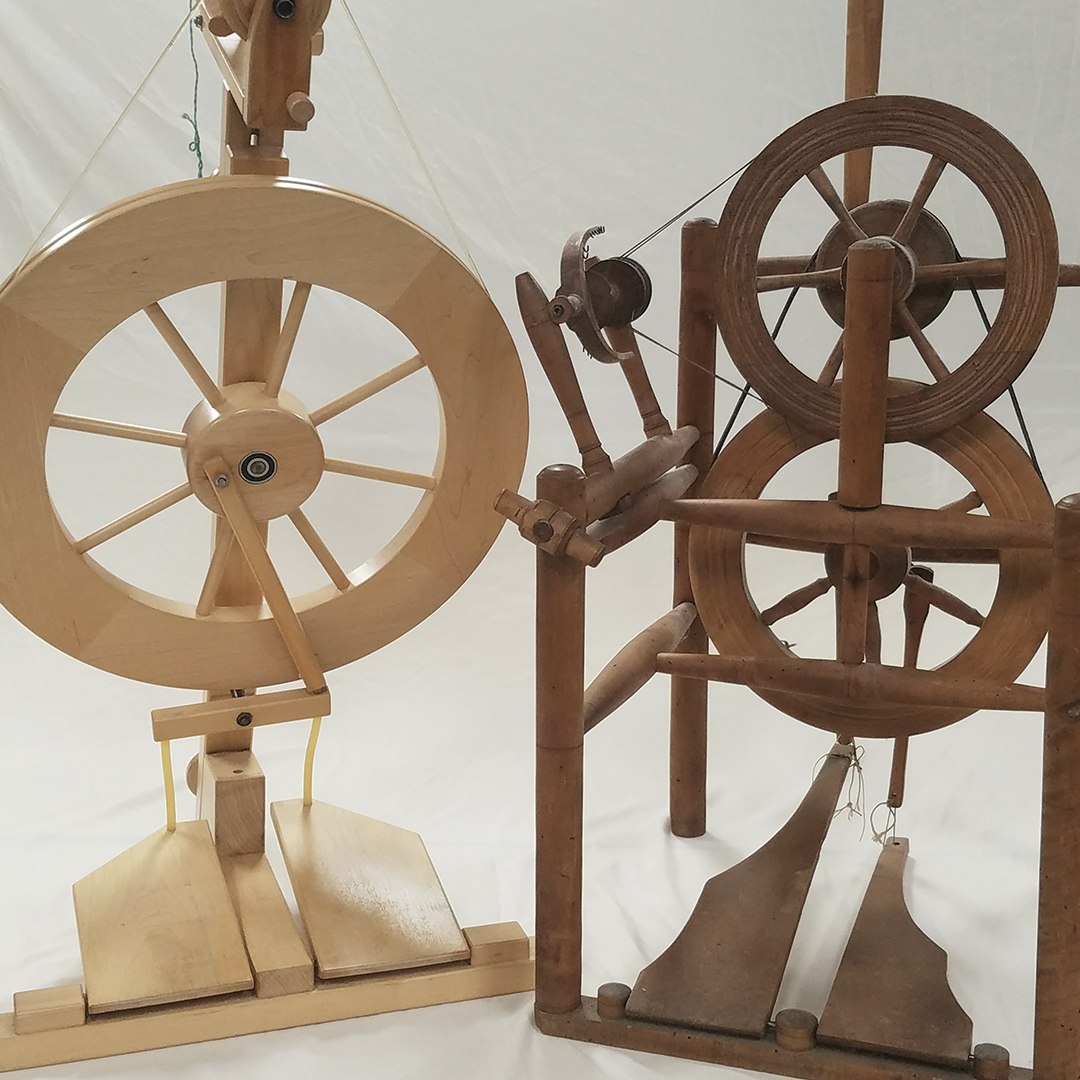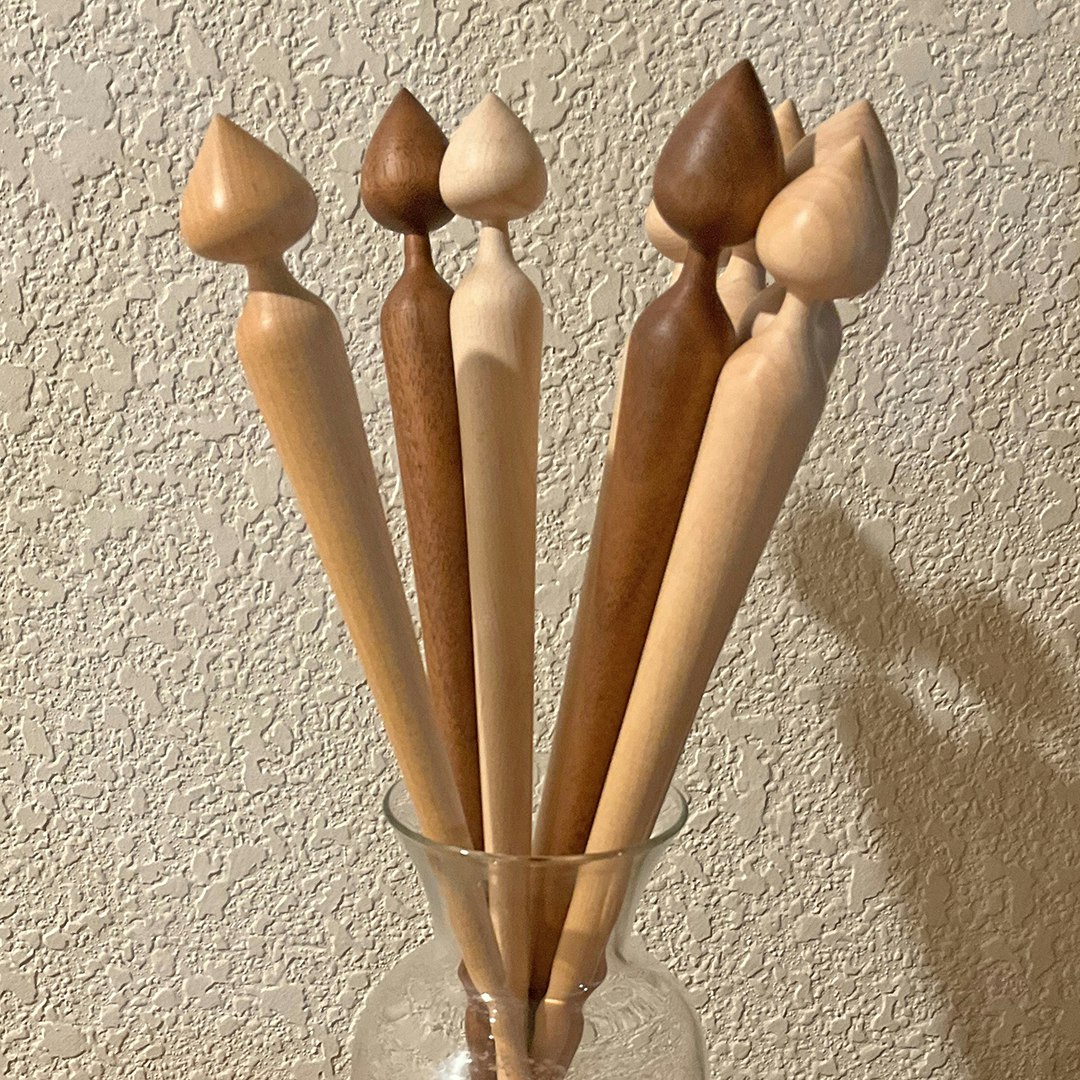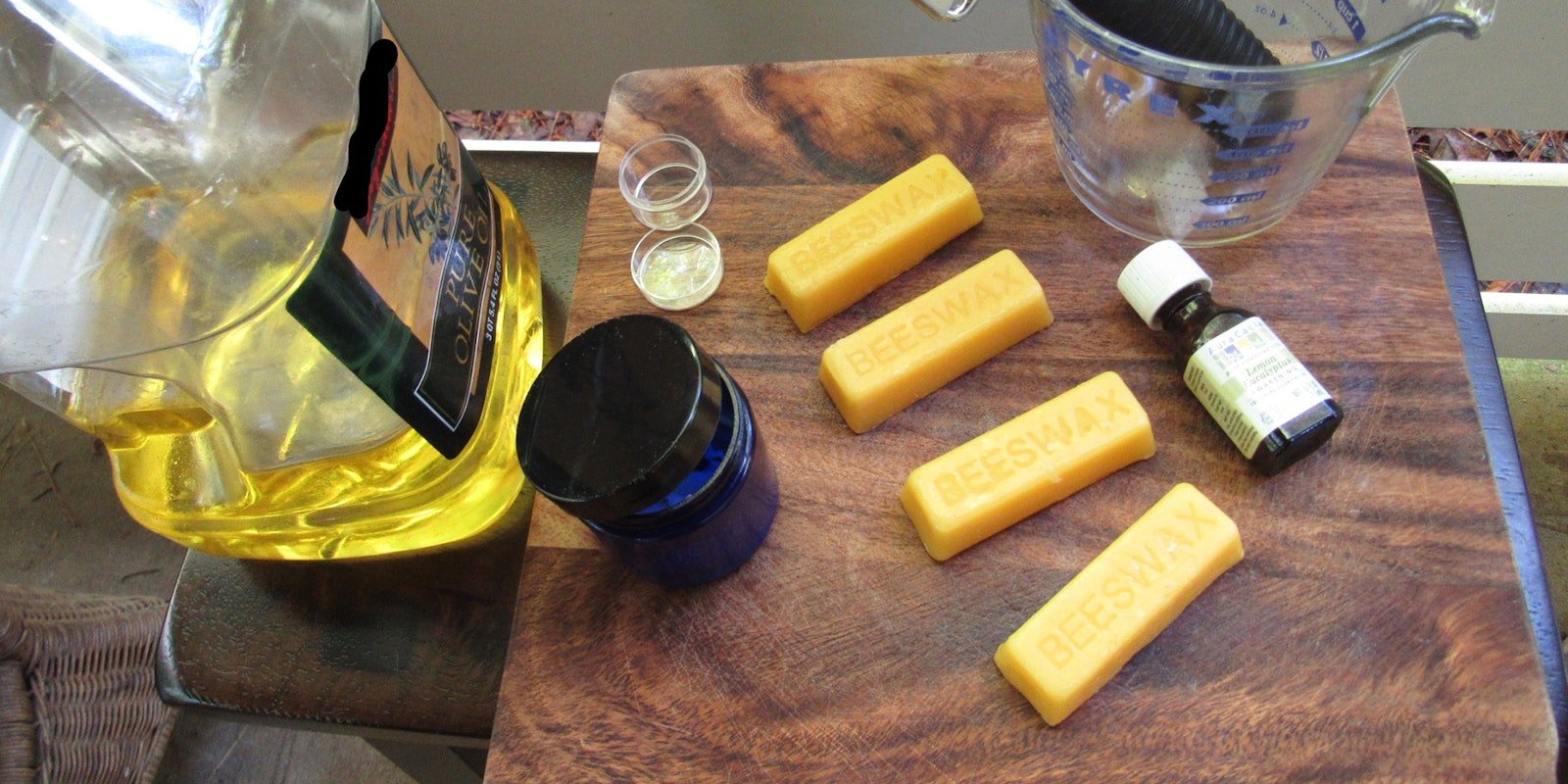A thorough spinner’s cleaning can be accomplished in just a couple of hours—depending, of course, on the size of your spinning wheel and spindle cache. Best of all, you won’t have to “Marie Kondo” a single thing.
Disclaimer time: You should refer to your equipment manufacturer’s manual prior to applying any kind of polish or wax to the wheel or oiling a hinge or ball bearing, as there are rare occasions when a lubricant can harm systems designed to work without any. Certain self-lubricated closed ball bearings are one such example. Look on your wheel maker’s website to find a copy of the manual for your wheel.
What you’ll need for this endeavor:
- Soft cotton rags
- Spinning wheel oil
- Wood conditioner
- Clean paint brushes or a toothbrush (compressed air works here, too)
- Cotton swabs
- Rubbing alcohol
- Patience
- Perhaps some nice background music
Cleaning your spinning wheel
For easiest maneuvering, take off the drive band, bobbin, and flyer before starting to clean a spinning wheel. Using a soft rag that has been very lightly dampened with water, dust the wood/frame of the wheel. Check for remnants of last year’s snacks and beverages, making sure to carefully but fully remove that spillage. Wipe out all grooves, crevices, hinges—all hideaways for fiber dust-bunny buildup. Use your clean brushes (or compressed air) if necessary, and don’t forget to pay attention to the footmen, the area under your treadles, and underneath the wheel base itself. (If your footmen tie on with leather, it’s time for a leather treatment, if not a complete leather tie replacement.) Additionally, wipe all the old grease off your flyer. Using a cotton swab dampened with soapy water or a bit of rubbing alcohol, carefully clean any kind of buildup left around the flyer hooks, as well as any greasy buildup just inside or around the orifice. Wipe down your bobbins, paying attention to the areas that slide onto your flyer shaft, which can accumulate grease and/or fiber particles.
Next, condition the wood using a natural paste, wax, or rub. This conditioning not only nourishes and moisturizes the wood, but it also helps guard against warpage during temperature changes, as it soaks into the wood to act as a natural barrier against all kinds of elements. The healthier the wood, the easier it is to clean, and the less likely you will be to end up with unattractive stains on the frame of your spinning wheel (including imprints of your oily feet on the treadles, if that kind of thing bothers you, and I’m not saying it should). It’s generally recommended to avoid conditioning the pulley/whorls and bobbins, which can become too slick and lead to slippage while you’re spinning.

A double-treadle wheel from Lendrum (left), and a nineteenth-century chair wheel (right). Photo by Tom Knisely
Be careful to always, always read the ingredients of the wood paste or product you’re using. You do not want to use any item containing silicone, as that will leave a permanent seal. (This rules out approximately 95 percent of the selection you’ll find at your local grocery store, including most spray furniture polish.) Opt for a truly natural product, one made from beeswax, olive and/or coconut oils, essential oils, etc., and which boasts its ingredients clearly and plainly. Typically, if the paste or rub is safe for wooden cutting boards, utensils, and butcher block tables, it would be easy and safe to use on your wheel.
If your wheel is still unfinished, using one of these wood-conditioning rubs is an especially good idea. It will bring out the richness of the wood grain while ensuring that the wheel’s frame is protected against small dings and big problems. It’s as easy as rubbing the paste on, letting it sit for five minutes, and then wiping it off with a clean rag.
Next, oil your wheel’s moving parts, again referring to your owner’s manual for areas to avoid. For the most part, all wheels enjoy being lubricated where any movement or friction occurs. For areas where rubber meets wood, plastic hinges, and other such areas where you wouldn’t want to use loose oil, a tube of White Lithium grease is a great option. It is non-clumping and light as spinning wheel oil, only thicker.
Beyond cleaning a spinning wheel, check all the parts of the wheel that may possibly be loose or need tightening or replacing. (Think footman joins and those leather ties, flyer hooks, and stretched-out drive and brake bands.) Now is the time to get those parts replaced or ordered, especially your drive band, which needs replacing more often than you may think, especially if you are a regular spinner. And hey, you’re done with the wheel, so grab your spindles . . .
Cleaning your spindles
The process is the same, but way easier. One by one, dust off your each of your spindles using a clean, dampened, soft rag. While doing so, check the tips of your most used supported spindles, in case one or two may be showing signs of wear. (Though rare, it can happen with a very soft wood.) Put those aside, as well as any other spindle in need of attention, such as a suspended spindle with a hook in need of re-bending or gluing, splintered shafts, or other flaws.

Don't forget to give your support spindles some love! Photo by Katrina King
I do not do anything extra when it comes to my own herd, beyond the thorough dusting. The artists who turn and finish today’s spindles typically put excellent sealant on them. However, I have had a spindle break after it dropped and hit the floor while in use. The maker was happy to repair it. Should you come across a spindle that needs a repair, get in touch with the artisan who created it, as these are finely weighted instruments, sensitive to the smallest changes you may make.
Speaking of instruments, look around one more time before putting away that cleaning and polishing gear. Surely there’s a nøstepinne or a lazy Kate—homemade or handcrafted—nearby, ready for a good wipe-down?
And that’s really all it takes for this early summer cleaning. It really is most perfectly timed for us spinners, too—Tour de Fleece doesn’t even start until the first week of July!
I know at my place, my equipment is primed and ready!
Debbie Held is a freelance writer, self-proclaimed spinster, and an international spinning instructor. She’s been blending wool and words since 2015, when she merged her career in journalism with her handspinning obsession—and she hasn’t stopped talking (and writing) about spinning since.
Originally published July 6, 2018; updated April 20, 2022.

